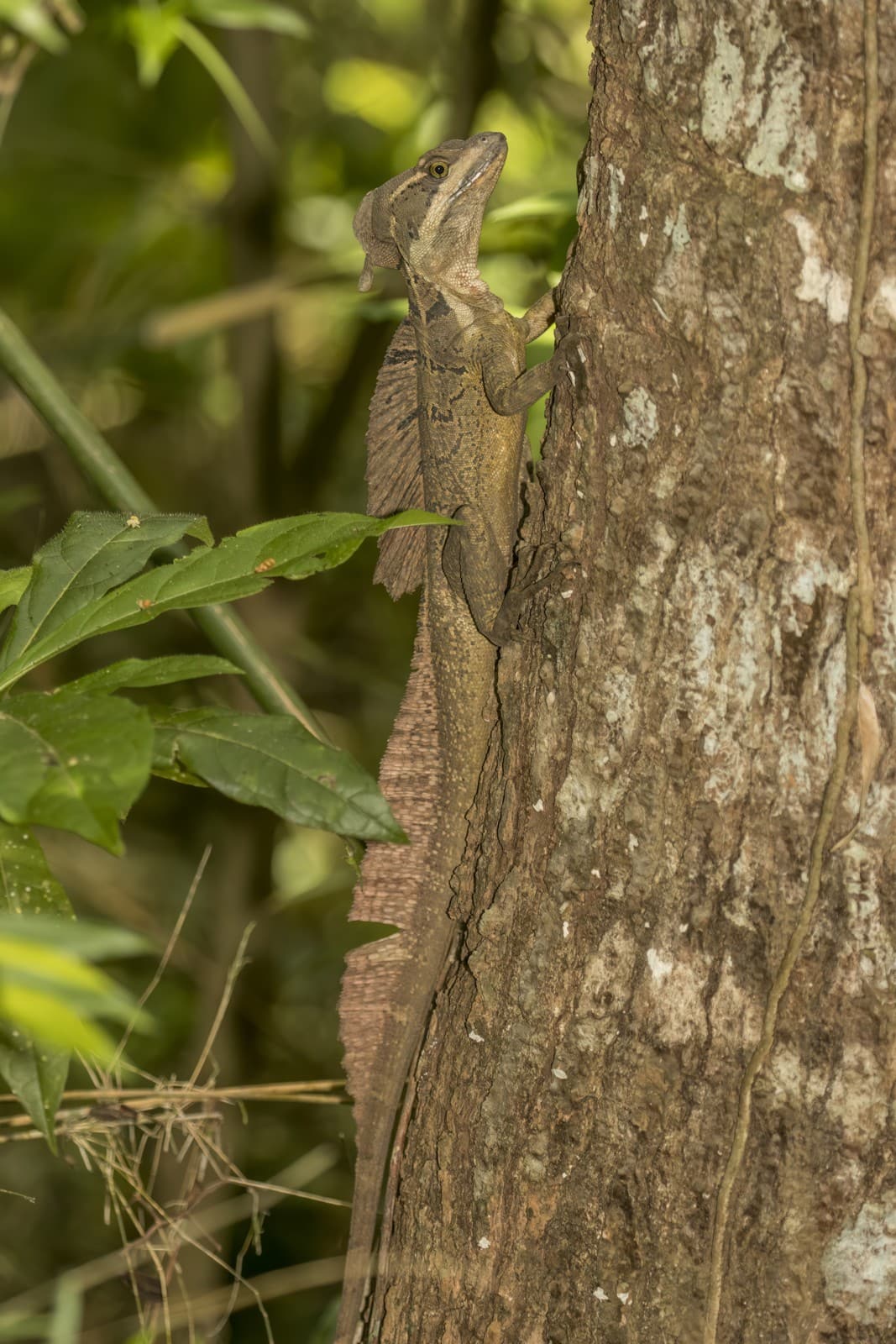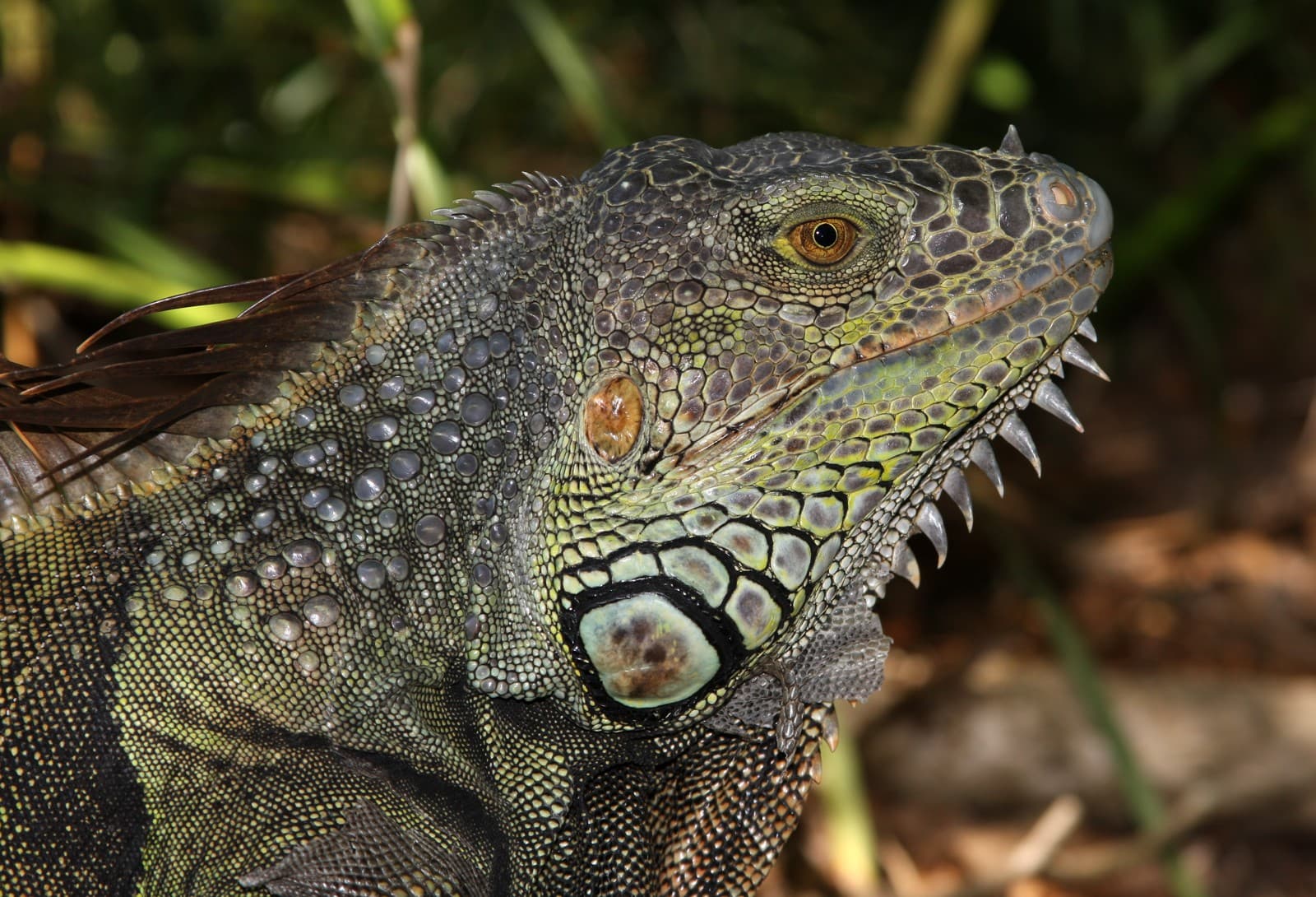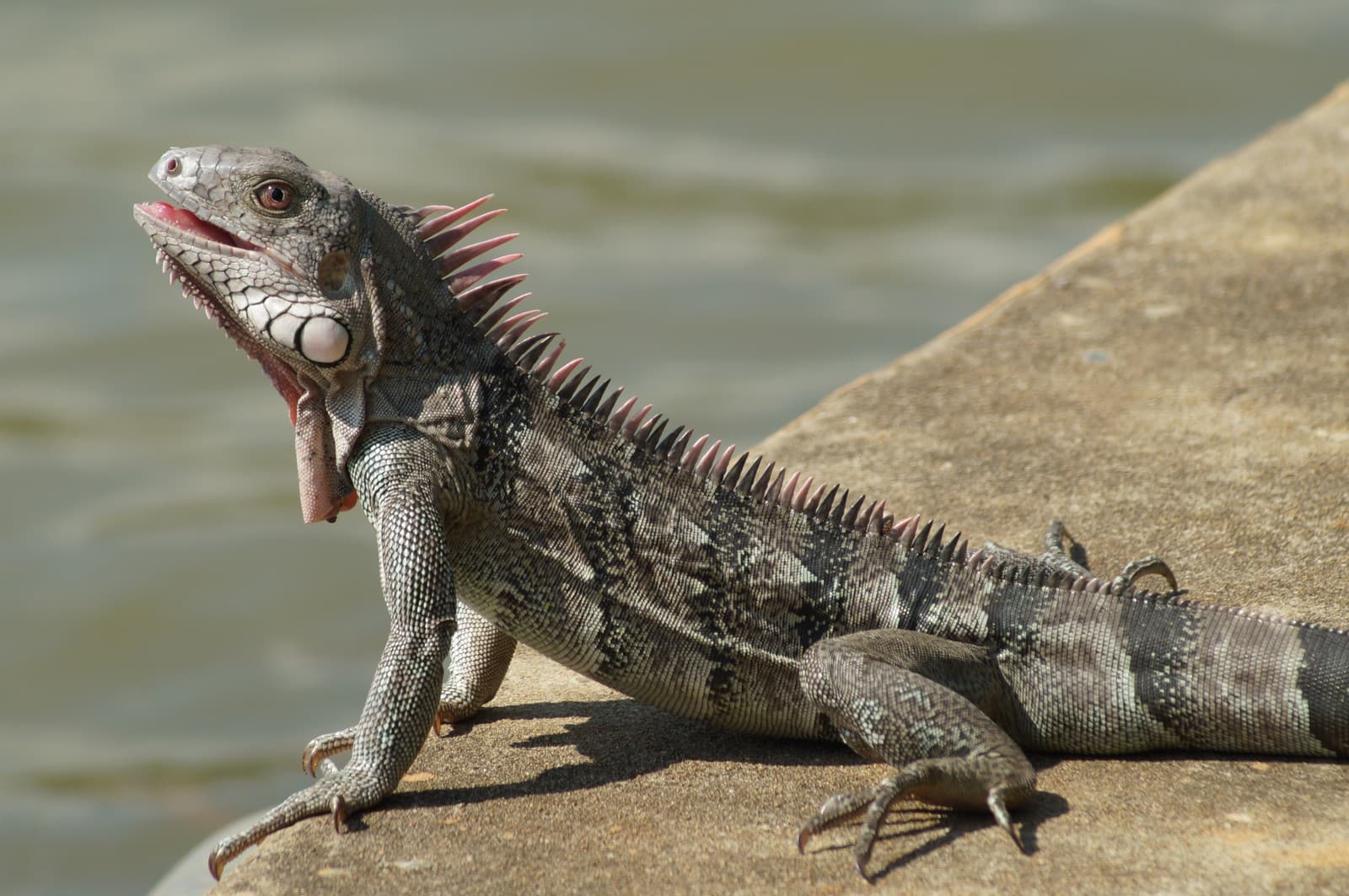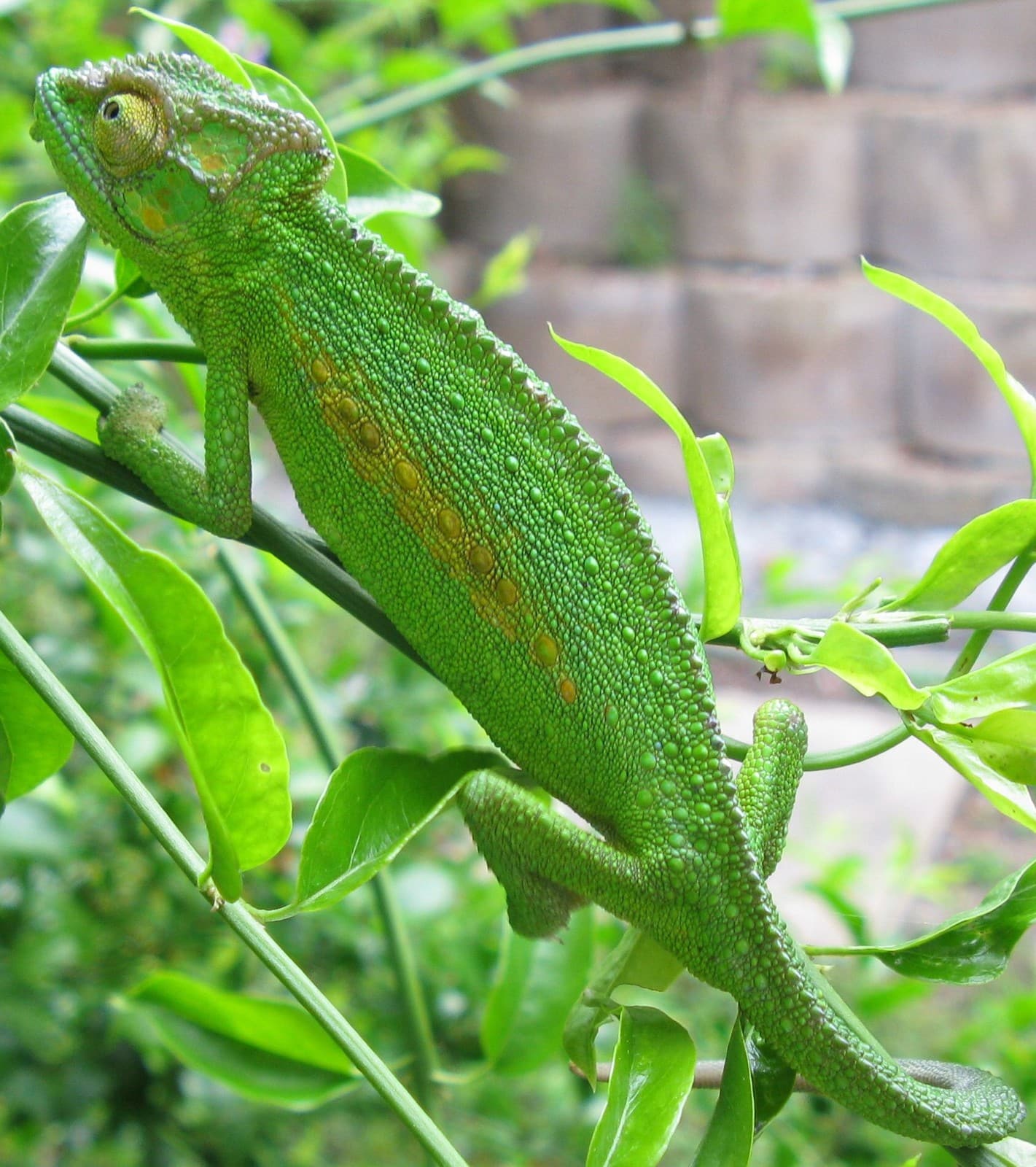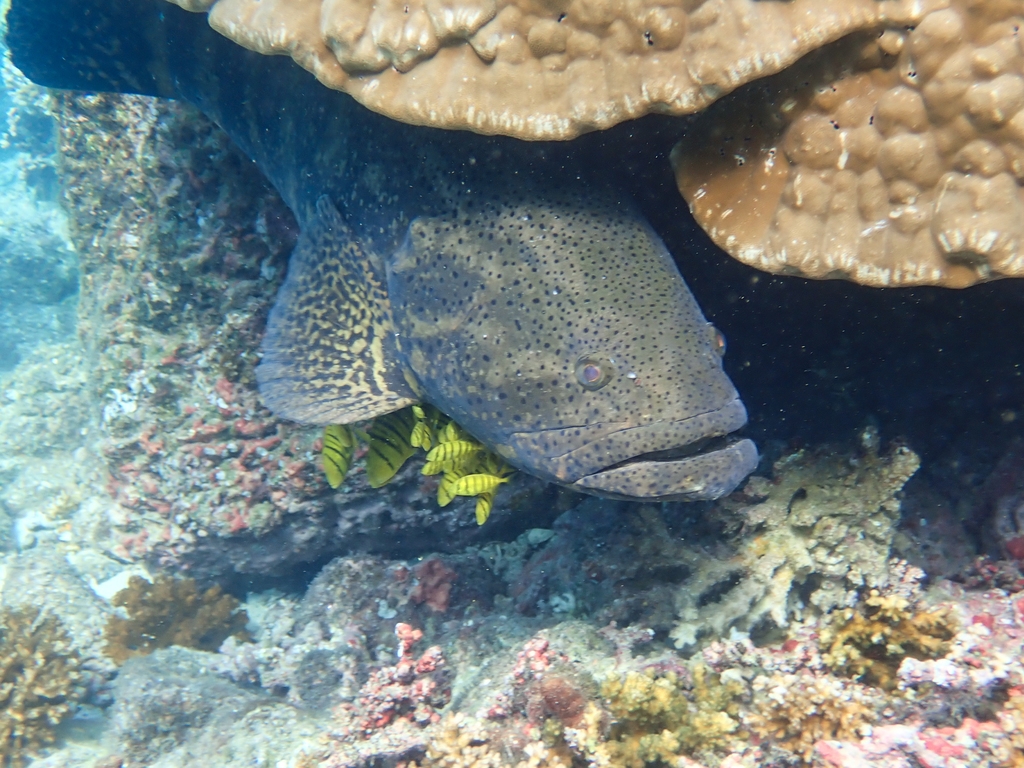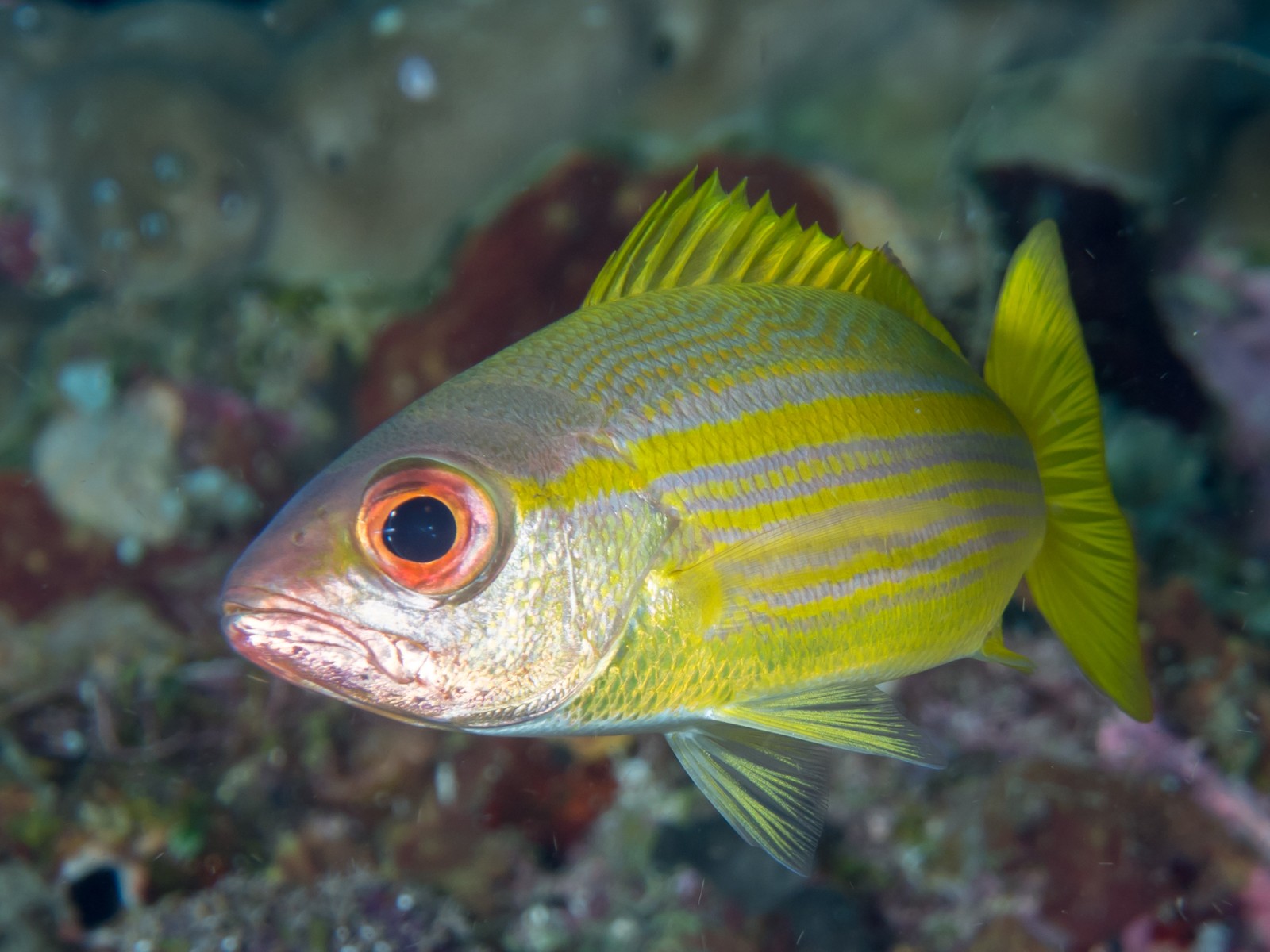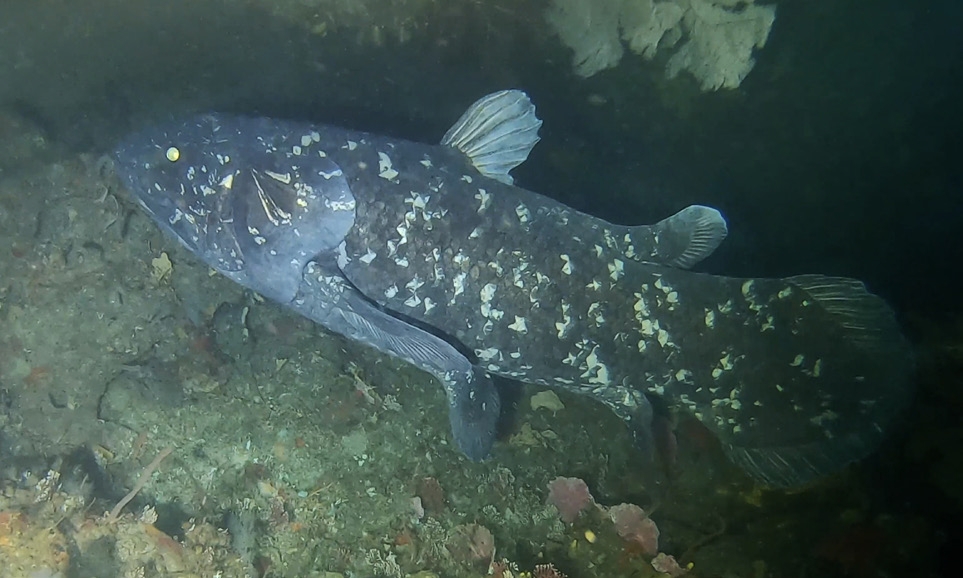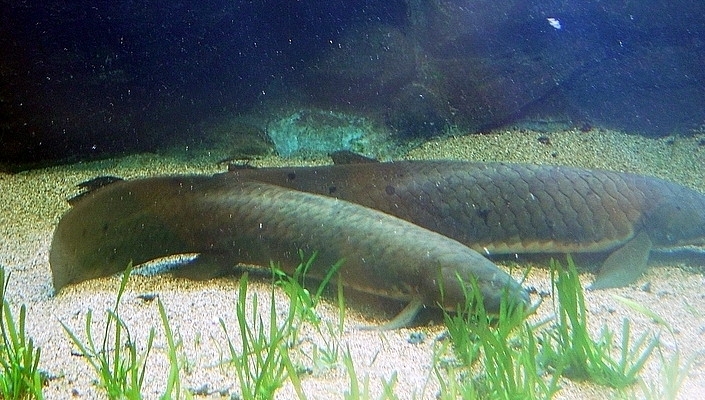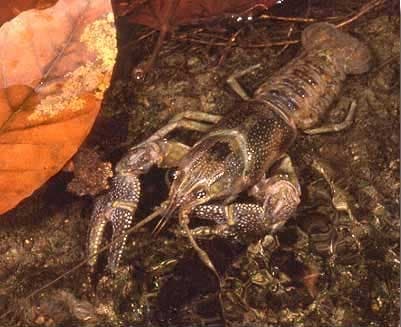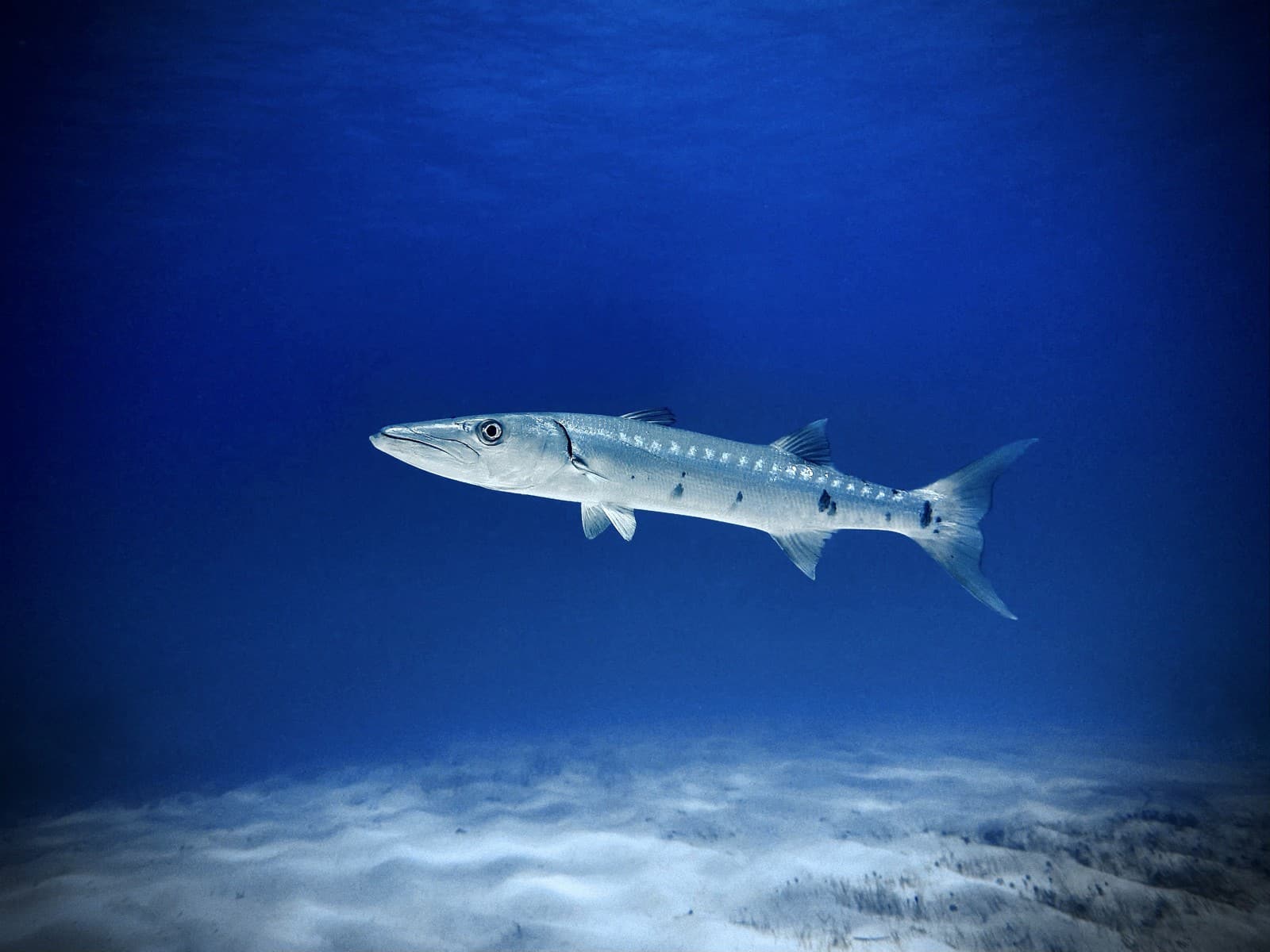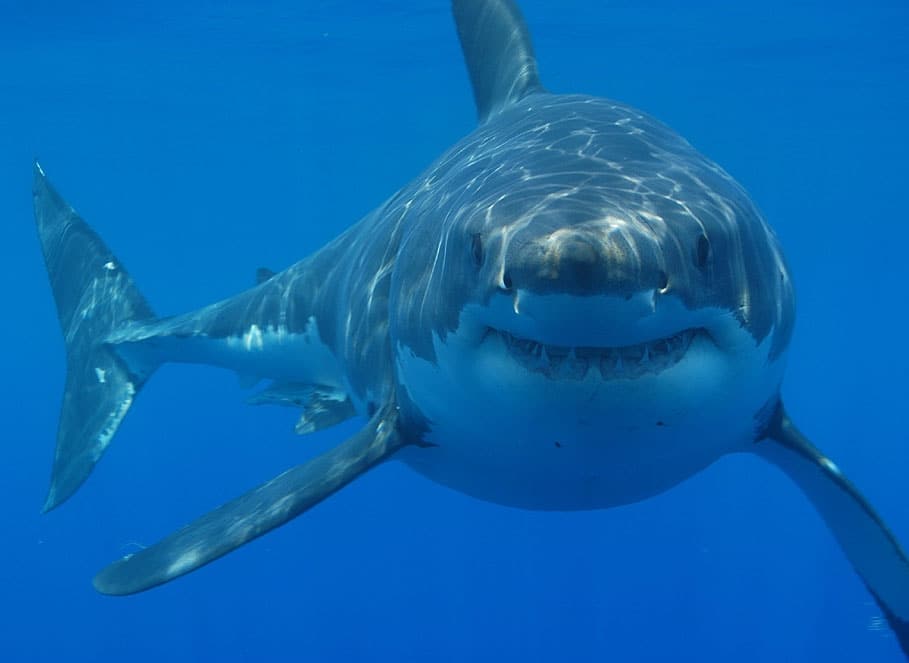Iguana vs Monitor: A Complete Comparison
When comparing iguanas vs monitor lizards, we encounter two remarkably different branches of the reptile family tree. While both are large lizards, monitors are typically more muscular predators, reaching lengths up to 10 feet (3 meters) in the case of the Komodo dragon, while the largest iguanas max out at about 6 feet (1.8 meters). This fundamental difference reflects their vastly different evolutionary paths and ecological roles.
The contrast between these reptiles extends far beyond size. Monitor lizards are active hunters with powerful limbs and sharp claws, equipped with a remarkable sense of smell that rivals that of many snakes. Iguanas, conversely, are primarily herbivorous, sporting specialized dentition and a complex digestive system adapted for processing plant matter.
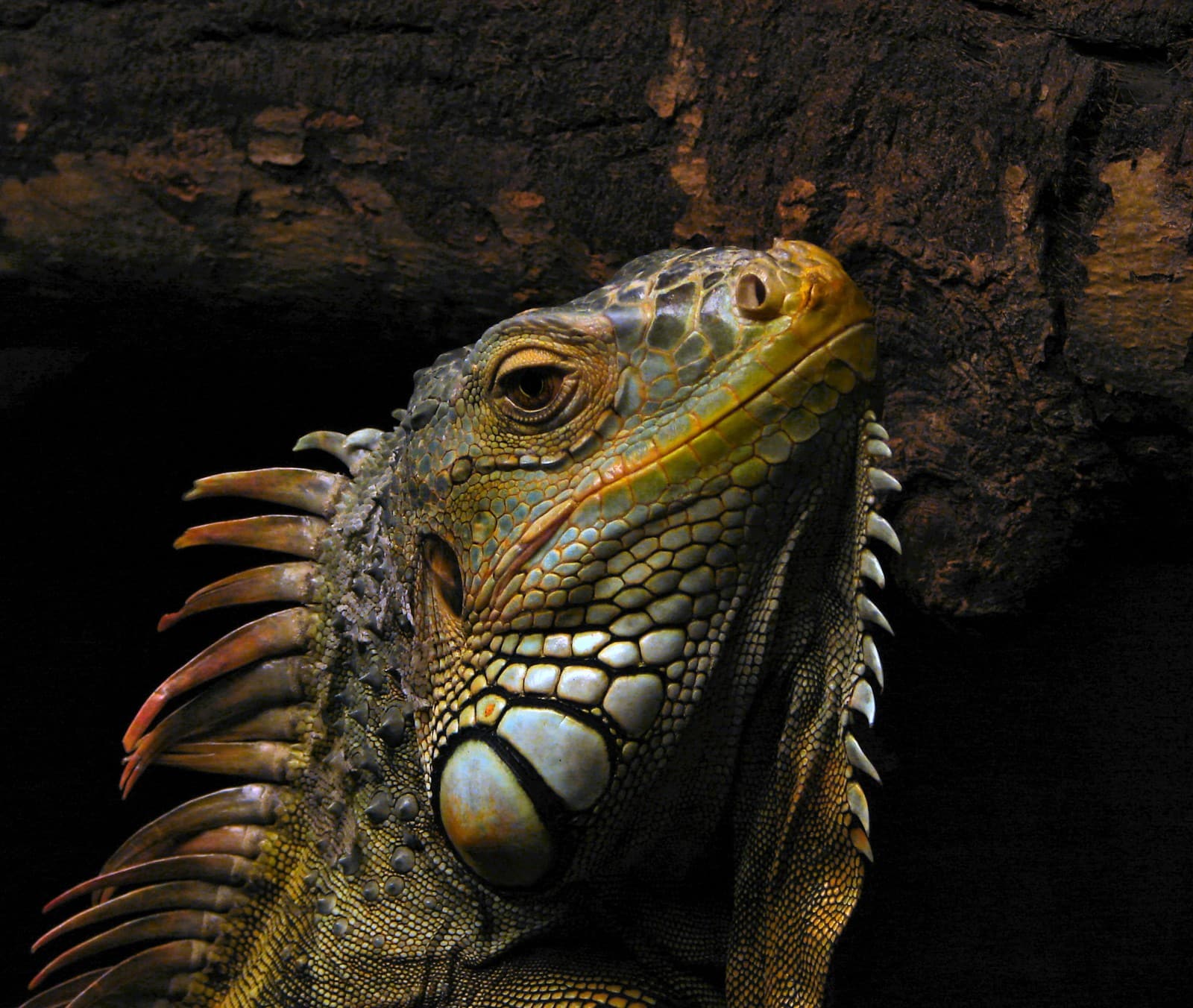
© Bjørn Christian Tørrissen / CC BY-SA 4.0
The green iguana exemplifies the distinctive features of its family, with its row of dorsal spines and specialized teeth designed for shearing vegetation. These adaptations reflect millions of years of evolution as specialized herbivores.
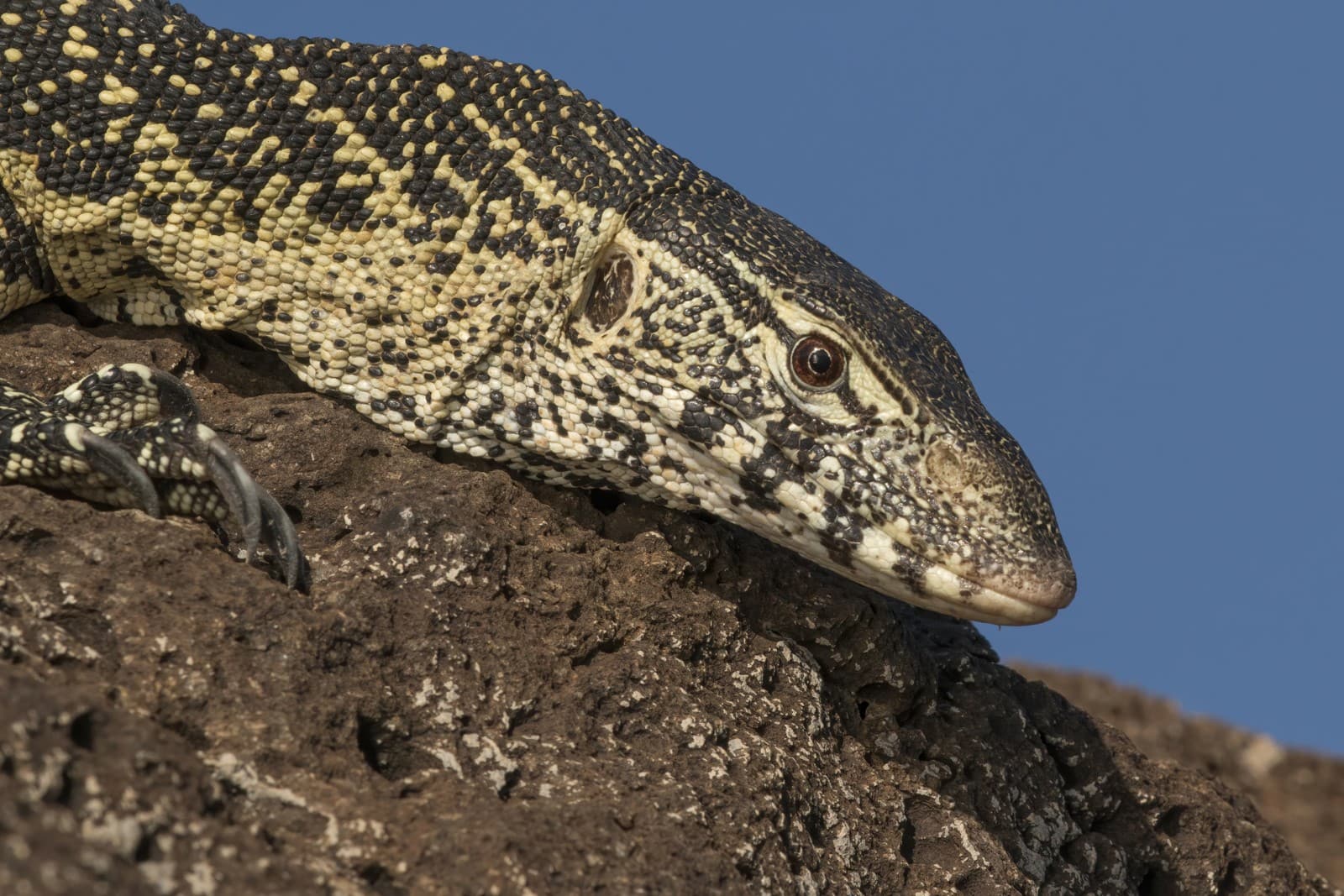
© Charles J. Sharp / CC BY-SA 4.0
Monitor lizards, like this Nile monitor, display the powerful build and keen senses characteristic of active predators. Their muscular bodies and sharp claws are perfectly adapted for hunting prey.
Key Differences Between Iguanas and Monitors
| Feature | Iguana | Monitor |
|---|---|---|
| Diet | Primarily herbivorous | Carnivorous |
| Size Range | 5-6 feet (1.5-1.8m) | 2-10 feet (0.6-3m) |
| Intelligence | Lower cognitive abilities | High problem-solving skills |
| Habitat | Trees and rocky areas | Various, from deserts to rainforests |
| Hunting Style | Grazing | Active pursuit predator |
| Lifespan | 20 years average | 15-25 years |
Habitat and Distribution
Iguanas and monitors have evolved to thrive in distinctly different environments. Iguanas are primarily found in the Americas, particularly in tropical and subtropical regions, where they spend much of their time in trees or on rocky outcrops. Monitor lizards, meanwhile, have a broader distribution across Africa, Asia, and Australia, occupying diverse habitats from mangrove swamps to arid deserts.
Behavioral Differences
Monitor lizards demonstrate remarkably complex behaviors, including tool use and problem-solving abilities that rival those of some mammals. They’re known to count prey items and can even recognize their human caretakers in captivity. Iguanas, while intelligent by reptilian standards, show more straightforward behavioral patterns focused on thermoregulation, feeding, and territorial defense.
Diet and Hunting
The dietary divide between these reptiles couldn’t be more stark. Iguanas are specialized herbivores, consuming leaves, flowers, and fruits, with specialized bacteria in their gut to help break down tough plant material. Monitor lizards are active predators, hunting everything from insects and small mammals to birds and eggs, with some species even taking down deer and wild pigs.
Who Would Win in a Confrontation?
While such encounters rarely occur in nature, a monitor lizard would likely dominate in any confrontation with a similarly-sized iguana. Monitors possess several advantages:
- Superior bite force
- More powerful muscles
- Predatory instincts
- Sharp claws
- Higher intelligence
Conservation Status
Both groups face significant challenges in the modern world. Many iguana species are threatened by habitat loss and collection for the pet trade, with some species critically endangered. Monitor lizards face similar pressures, with additional threats from hunting for their meat and skin. Conservation efforts for both groups focus on habitat protection and breeding programs.
Keeping as Pets
Both iguanas and monitors can be kept as pets, but they require vastly different care:
-
Iguanas need:
- Large vertical enclosures
- UV lighting
- Specialized plant-based diet
- High humidity
-
Monitors require:
- Extensive horizontal space
- Complex enrichment
- Varied protein-based diet
- Strong enclosure security
Always research thoroughly and check local regulations before considering either as a pet, as both require significant expertise and resources to maintain properly.
